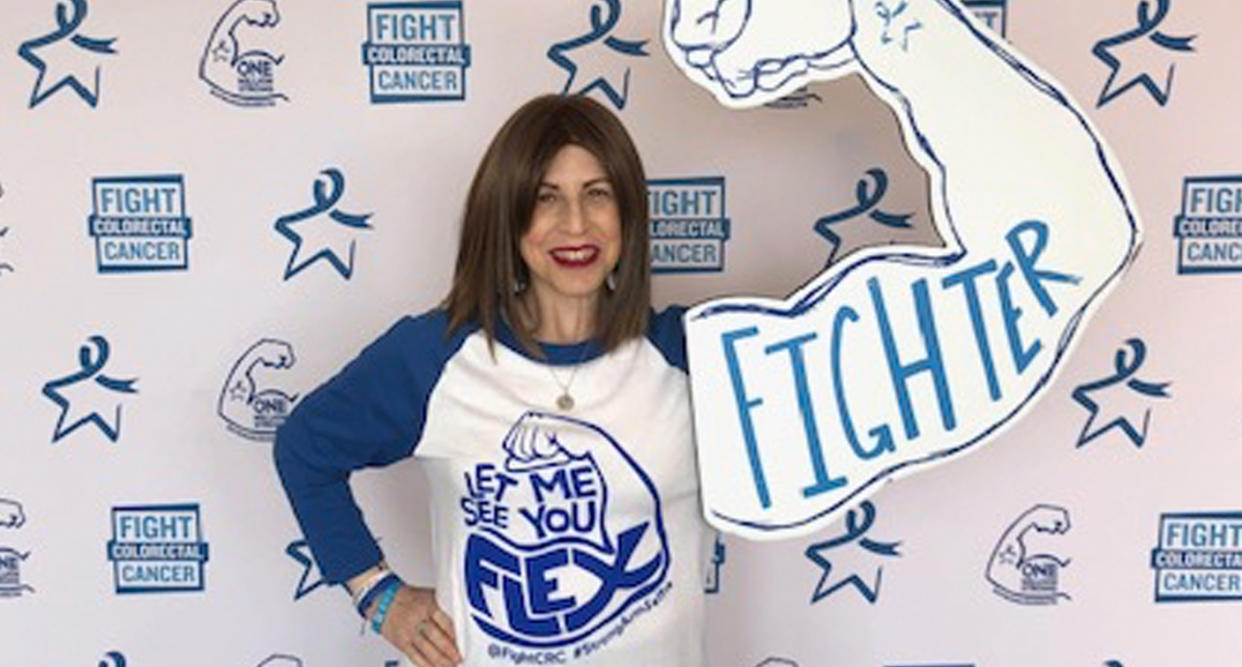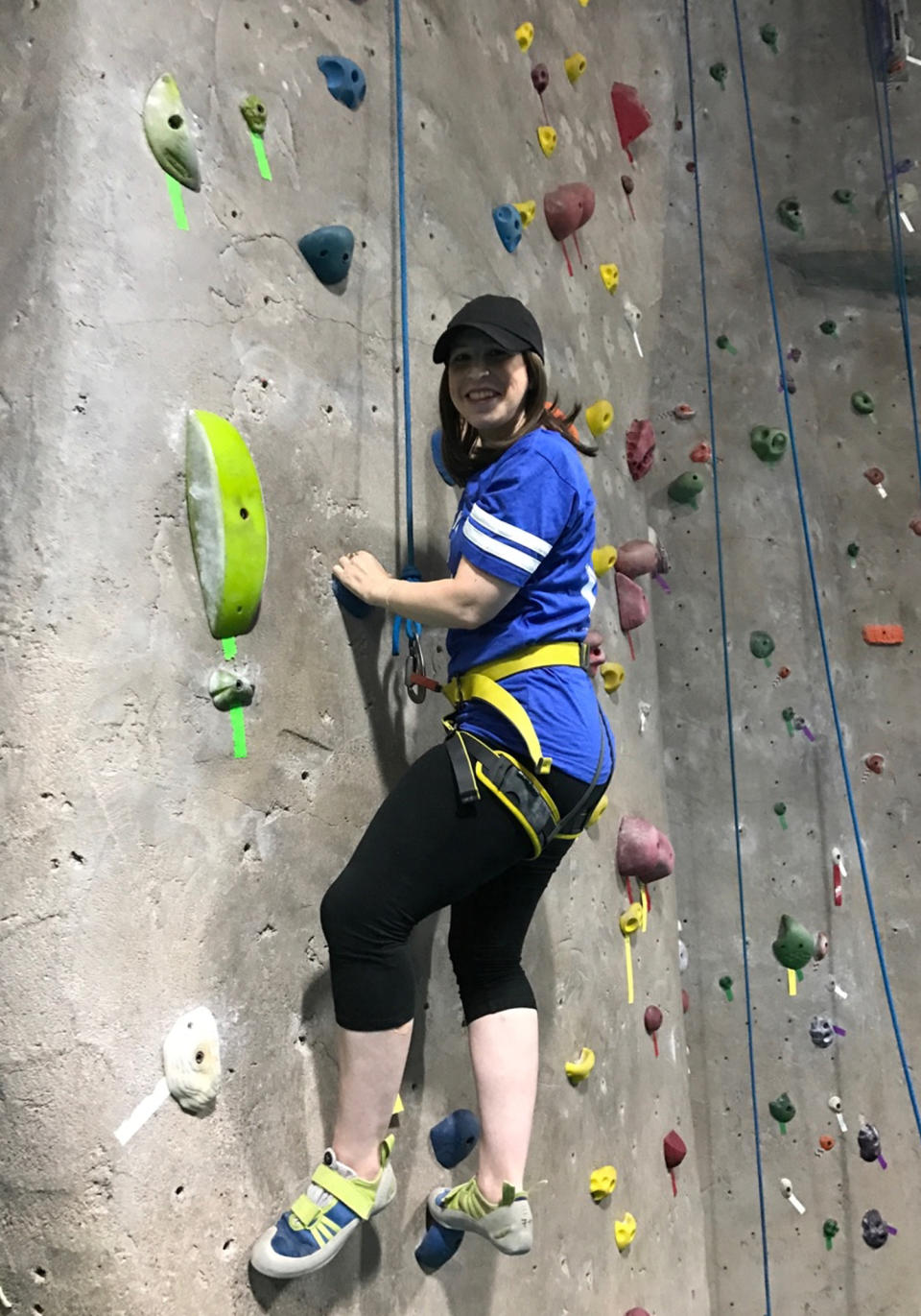Colon cancer survivor on dating with an ostomy bag: 'I always tell men up front'

Allison Rosen, 39, was diagnosed with colon cancer in 2012, at the age of 32. Here, she opens up to Yahoo Lifestyle about what it’s like to live with an ostomy bag — a small, waterproof pouch that’s used by some colon cancer survivors to remove waste after surgery.
I was diagnosed with stage two colon cancer when I was 32. Since I have Crohn’s disease — a chronic inflammatory bowel disease that raises risk of colon cancer — I had been having regular colonoscopies. But in 2012, I started having strange symptoms: I was diagnosed with anemia, was losing weight, and generally felt fatigued and tired. I was overdue for my colonoscopy, and scheduled one for as soon as I returned from a business trip. While traveling, I knew something was really wrong: I couldn’t eat anything, and when I did, it felt like food was stuck.
Sure enough, my colonoscopy revealed colon cancer that required immediate surgery.
The surgeon took out so much of my colon that he wanted to put in an ostomy bag. I was horrified by the prospect — I was young and vain and worried it would impact my dating life. So instead, against his better judgement, he gave me a J-pouch, a pouch that’s created from a patient’s own small bowel as a way to hold and pass stool. But that created a tremendous amount of inflammation that led to my being in and out of the hospital for several years (in fact, I spent more time in the hospital for this than I did for my chemotherapy and radiation).
It all came to a head four years ago, when my J-pouch was punctured during one of my emergency surgeries. As a result, I had to have an ileostomy, a procedure where the end of my small intestine was brought through an opening of my belly so that stool could leave my body. Unfortunately, that did require an ostomy bag. I thought it would just be temporary, but after a few weeks I realized my quality of life had improved considerably. Before, with the J-pouch, I had severe anxiety about getting in my car or eating because I was constantly running to the bathroom with diarrhea. I was taking Imodium like it was candy. This was no longer an issue with my new ostomy bag. I could go out to dinner with friends or see a movie without obsessing about where the bathroom was.

I went back to MD Anderson (where I had my initial cancer treatment) and the surgeon told me that he could try to put another J-pouch in, but he thought my quality of life would be horrible. I was devastated. I didn’t know anyone else my age with an ostomy bag, and I felt so alone and isolated. But thankfully, MD Anderson has an ostomy clinic, so I was connected with other people going through the same thing.
I won’t lie — it took me a while to adjust to my new lifestyle. The bag sometimes leaked, which caused skin irritation, and I spent so much time at MD Anderson I joked I might as well rent a room in their ostomy clinic. But between the staff and my dad, who’s a dermatologist, I was able to make it work.
Now, I only change my ostomy bag once a week, and I can do it in under an hour. No one can even tell I’m wearing one. I had this preconceived notion that I would be lugging a huge bag around that everyone could see, but it’s just a small discreet pouch that isn’t even visible underneath leggings or tight dresses.
I do have to empty the bag a few times a day. You’re supposed to do this when it’s about halfway full, because otherwise it will start to pull away from your skin. I just go into the bathroom and sit or stand on the toilet and empty it. It took some practice at first, but I got the hang of it. When the bag is opened, it does smell — usually of whatever you ate or drank that day. To minimize the odors, I usually spray potpourri in the toilet bowl when I’m done.

I’ve had the ostomy bag for about two years now, and I can say with confidence that it’s given me my life back. It was a little strange the first time I got into a bathing suit, but I was with a group of young colon cancer survivors and no one batted an eye when they saw my bag.
Since then, I’ve done everything I used to do before — including rock climbing, white water rafting and surfing. Sure, there are some modifications you have to make — for example, I have to put special waterproof cushioning around my ostomy bag so it won’t get wet — but it was amazing to me that I could jump on and off the surfboard without a care in the world. Before, I’d be racing out of the water to get to the bathroom or stressing that an accident would happen while I was swimming. The one thing about having an ostomy bag is that I no longer have a butthole — it was sewn up after my last surgery. There’s actually a nickname for it in the ostomy community: Barbie butt.
I’ve even started dating again, something I always assumed would be unthinkable with an ostomy bag. But I’ve been pleasantly surprised by the responses I’ve gotten. Many of the guys don’t seem fazed by it, or mention that their grandfather had one or that they know someone who is a colon cancer survivor. I always tell men up front — I want them to know I’m a colon cancer survivor, and that I have an ostomy bag. If they don’t like it, that’s too bad. My ostomy bag is a part of me now. I love my body exactly the way it is, and I’m proud of my bag in the same way I’m proud of my surgery scars. It’s nothing to be ashamed about.
Read more from Yahoo Lifestyle:
This cancer is on the rise in young adults — and doctors don’t know why
How humor helped Maria Menounos and her mom cope after they were both diagnosed with brain tumors
This new mom thought she had hemorrhoids — but it turned out to be cancer
Follow us on Instagram, Facebook, and Twitter for nonstop inspiration delivered fresh to your feed, every day.
